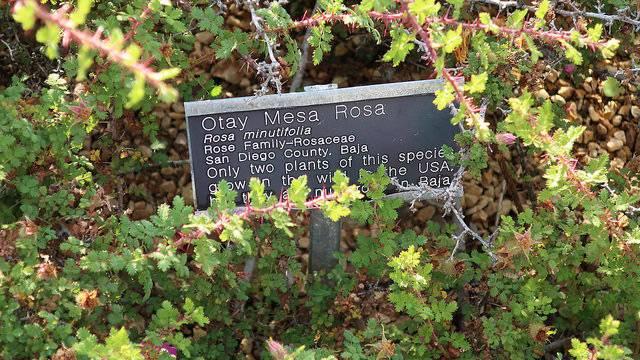
President Trump was forced to withdraw his "border wall" from the most recent federal spending bill, but it hasn't stopped him from moving ahead on the plan -- amid fits, starts and a new lawsuit headed his way.
One of the first steps the Trump administration has targeted is picking an company to build the wall, which the administration estimates would cost $8-12 billion to complete. But that goal has hit a few snags in past months, forcing the Department of Homeland Security (DHS) to extend the deadline for design proposals. According to interested applicants, the biggest problem has been confusion about both the actual guidelines and the deadline dates.
But that hasn't really slowed down the interest. Homeland Security estimates that by the "real" deadline of April 4, it had received more than 400 proposals -- from formidable-looking concrete barriers to walls adjoined by tourist overlooks and powered by solar energy. A proposal from a Fort Worth, TX company offered the simplest answer: a "virtual" wall operated by remote computer technology and outfitted with thousands of small sensors. While the see-through wall would probably not appease President Trump, the cost would probably interest Congress: it comes in at only $3 million, a fraction of the cost that Trump asked for in his first budget proposal.
That list of 400-plus bidders has now been whittled down to under 20. Each of the final bidders must complete a prototype of its proposed wall in California's dusty Otay Mesa, an area that is owned by the federal government and is considered critical habitat for several endangered species.
And that's where the Center for Biological Diversity comes in. Last week CBD sent notice to DHS that it was in violation of federal law by not conducting an environmental review as required by the National Environmental Policy Act and Endangered Species Act. The NGO says the prototypes, which are meant to be smaller but just as formidable as the final wall, will disturb the ecological balance of an area that has for years, been considered off-limits to development.
“The administration’s failure to consider the impacts of these border-wall prototypes shows a striking disregard for our nation’s irreplaceable natural heritage and doesn’t bode well for how the administration will approach construction of the wall itself," said Brian Segee, senior attorney for CBD, who pointed out that the very guidelines for the prototypes reflect the long-range ecological damage that could come from erecting a wall along the 2,000-mile US-Mexico border.
According to DHS each physical prototype must be 30 feet tall, must extend below the earth by 6 feet and can't be climbed. For Otay Mesa's endangered and threatened species, says the CBD, up to 20 prototypes means chaos for delicate desert species already challenged by environmental conditions such as drought and flooding.
"Building just these prototypes for the wall will affect several endangered species, so it’s clear that a wall across the entirety of the border will do widespread damage to endangered species and the critical habitat they depend on to survive,” Segee said. “Trump’s wall threatens to cut through the heart of the borderlands, among the most biologically and culturally diverse areas in North America. It will be a blight of epic proportions.”
A recent report by CBD suggests that close to 100 species could be affected by a full-length wall, which is why the government is required by law to conduct an environmental assessment before proceeding with prototypes or construction.
In 1997 the US Fish and Wildlife Service designated the area as a critical habitat for the fairy shrimp, a tiny endangered species that make its home in Otay Mesa. A 2010 court ruling concerning the rights of homeowners in the area on land the FWS had identified as critical habitat found that the FWS had jurisdiction in protecting the area as critical habitat. The CBD states that the DHS and US Border and Protection Services were "in violation of Section 7(a)(2) of the [Environmental Species Act] 3 for their failure to consult with U.S. Fish and Wildlife Service (“FWS”) in order to ensure that the border wall prototype project (Phase II of the border wall request for proposal contractual process) does not jeopardize the continued existence of impacted threatened or endangered species ..."
The lawsuit also takes aim at the interpretation that has been applied to the ESA by the current administration, which states that there are exemptions that allow it to circumvent an environmental assessment. Earlier exemptions from the Bush administration called for waiving a ESA when the issue concerned national security.
But CBD points out that the project is a prototype, not an actual wall, and thus doing an environmental assessment doesn't stand in the way of border security.
CBD and other environmental organizations have zeroed in on what seems to be a key premise of the Trump administration, which is that its view that the administration has the end-say in matters of enforcement of environmental regulations. Whether the courts will agree, is yet to be seen.
Flickr images: Pacific Southwest Region US Fish and Wildlife Service; cultivar413
Jan Lee is a former news editor and award-winning editorial writer whose non-fiction and fiction have been published in the U.S., Canada, Mexico, the U.K. and Australia. Her articles and posts can be found on TriplePundit, JustMeans, and her blog, The Multicultural Jew, as well as other publications. She currently splits her residence between the city of Vancouver, British Columbia and the rural farmlands of Idaho.














